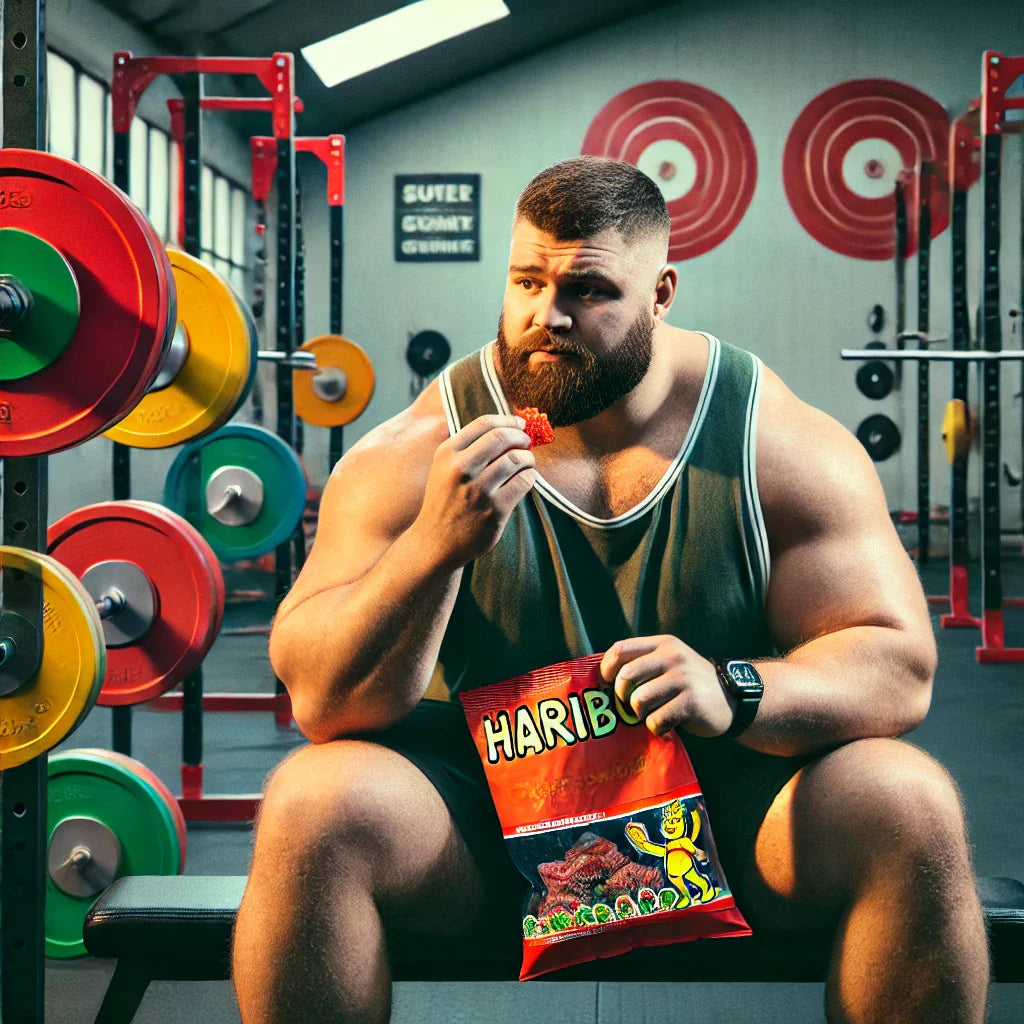
Why The Big Guy in the Gym Eats Haribo's Between Sets: A Look at Gym Nutrition
Share
Why the Big Guy in the Gym Eats Haribo's Between Sets: A Look at Gym Nutrition
You've seen him—the gym regular, muscles bulging as he powerlifts weights most people couldn't budge. Surprisingly, in between sets, he snacks on Haribo gummy bears. At first glance, this habit runs counter to what many would expect from someone focused on optimal performance and disciplined gym nutrition. Yet, there's a logical reason why experienced athletes, particularly those training for strength or muscle gain, might choose fast-acting carbohydrates like gummies mid-workout.
The Science of Carb-Loading
To understand this behavior, it's important to know how carbohydrates fuel athletic performance. Carbohydrates serve as the body’s primary energy source, especially during intense exercise. When lifting heavy weights, muscles quickly use up their stored glycogen. Rapidly replenishing these stores is key to sustaining high levels of workout performance and maximizing each set.
This is where Haribo gummy bears come into play. While they're not designed for athletes, their simple sugars offer an immediate source of energy that can restore glycogen quickly. Similar to how a marathon runner consumes glucose gels for a quick lift, a weightlifter may grab gummy bears for a fast carbohydrate refill, supporting peak performance during prolonged gym sessions.
The Downside of Sugary Treats
Of course, these sugary options have clear disadvantages when it comes to long-term gym nutrition. Because gummy bears have minimal protein and lack essential micronutrients, relying on them regularly isn't sustainable for optimal performance. Common concerns include:
Energy crashes: The quick spike in blood sugar is often followed by a rapid drop, potentially leading to reduced energy late in the workout.Weight gain: High consumption of added sugars contributes extra calories, which can hinder goals like fat loss or lean muscle building.Dental problems: Sticky, sugary foods increase the risk of cavities and other oral health issues.Smart gym nutrition means considering not only the immediate boost from carbs but also the broader impact on your health and fitness outcomes.
Smarter Alternatives for Gym Nutrition
Lifters looking for sustained energy and better nutritional value should consider healthier alternatives. Foods like bananas provide both the potassium and natural carbohydrates needed for muscle function and energy release. Oatmeal offers complex, slow-digesting carbs suitable for pre-workout fuel. Well-formulated protein bars can supply a balanced mix of protein, carbs, and healthy fats to support recovery and workout performance, while fruits such as apples and berries deliver vitamins, fiber, and hydration alongside natural sugars.
Purposeful food choices help maintain steady energy levels throughout your session, support recovery, and align better with long-term goals, from muscle growth to fat management.
The Bottom Line
Reaching for sugary treats like Haribo's in the gym is a short-term strategy some lifters use for a quick energy fix, but they aren’t a substitute for a balanced approach to gym nutrition. Focusing on nutrient-rich, whole foods pays greater dividends in optimal performance and overall well-being. Prioritizing what you eat before, during, and after training will help you get the most from every workout—and might even inspire others at the gym to make smarter choices for peak results.